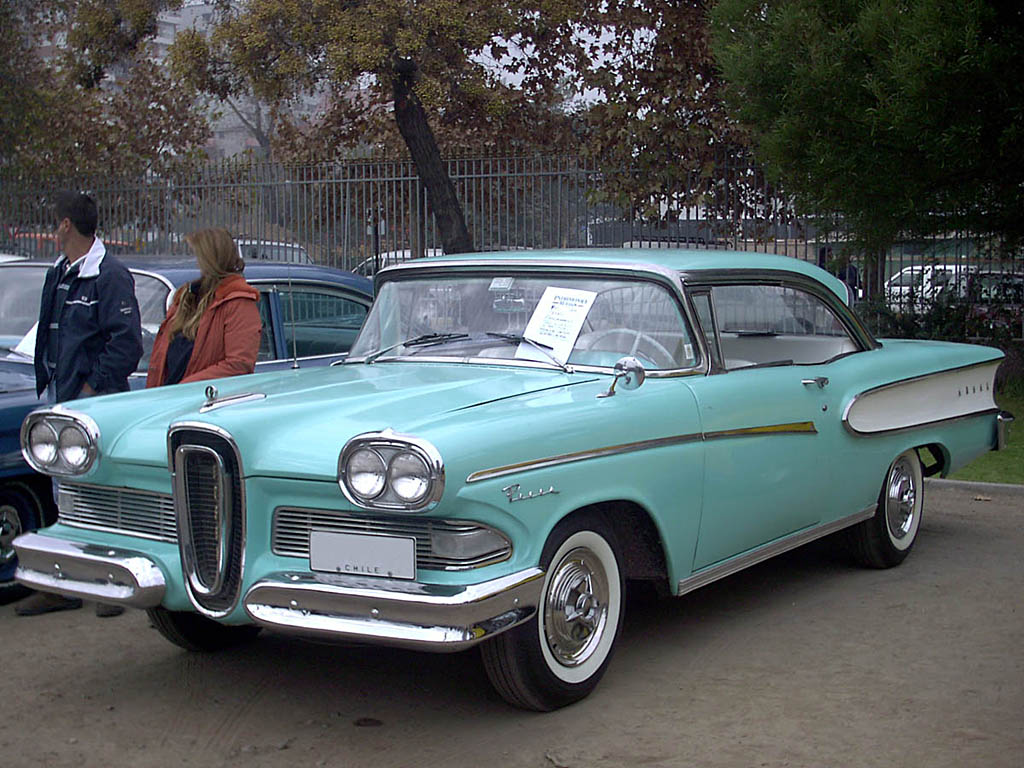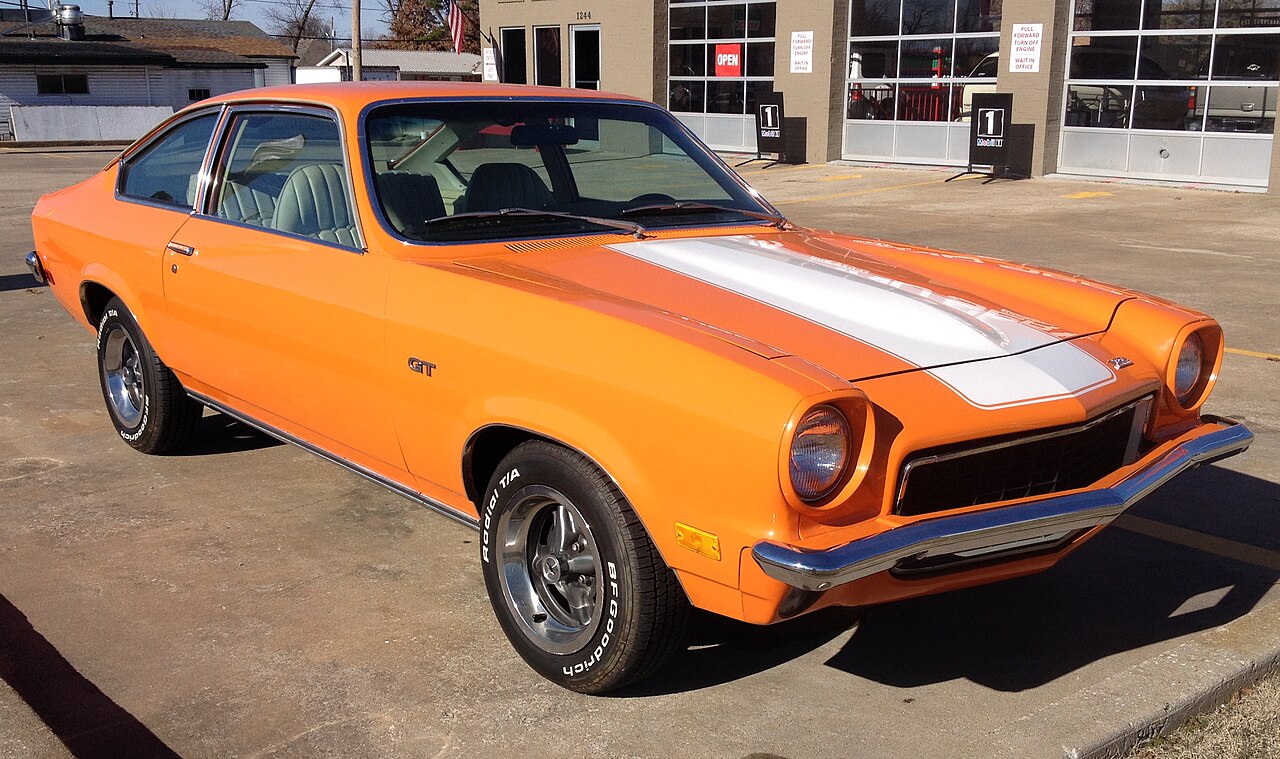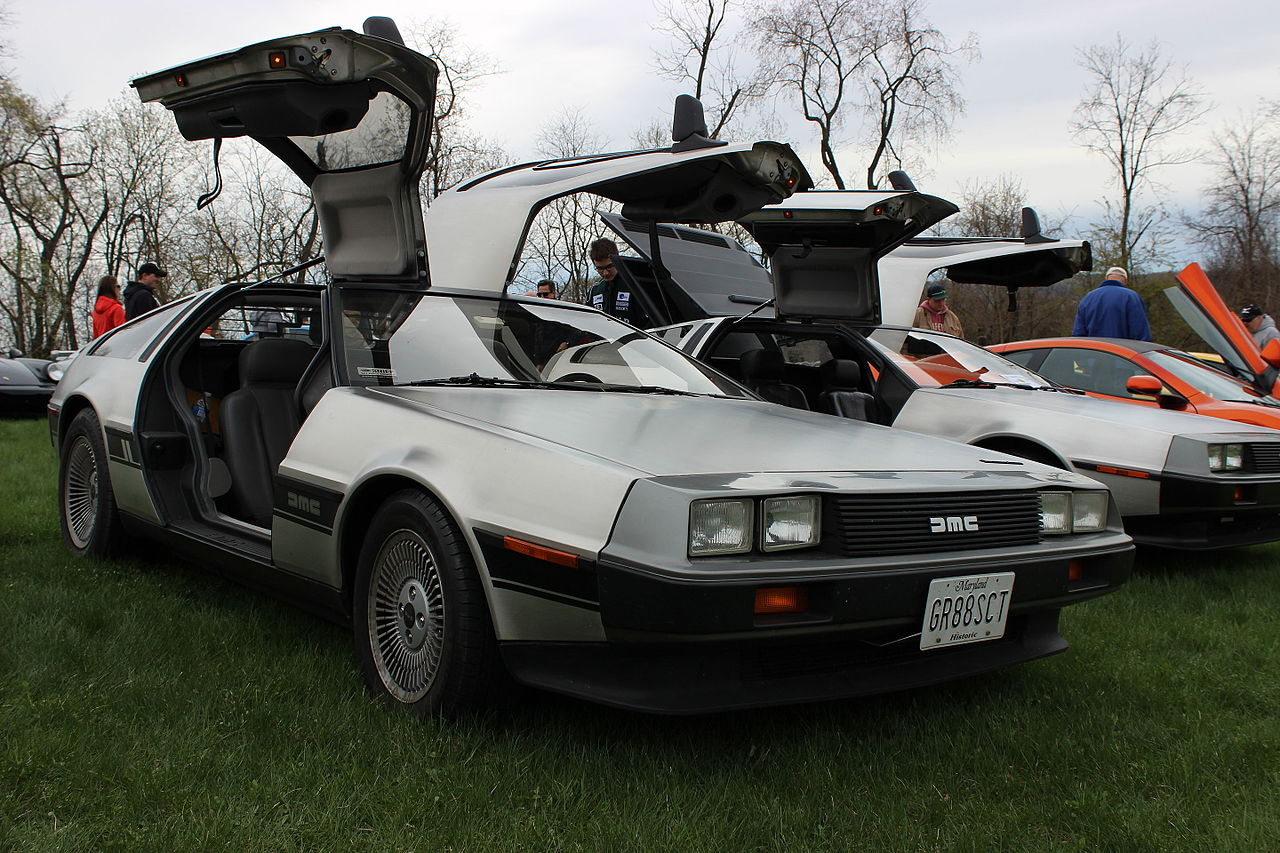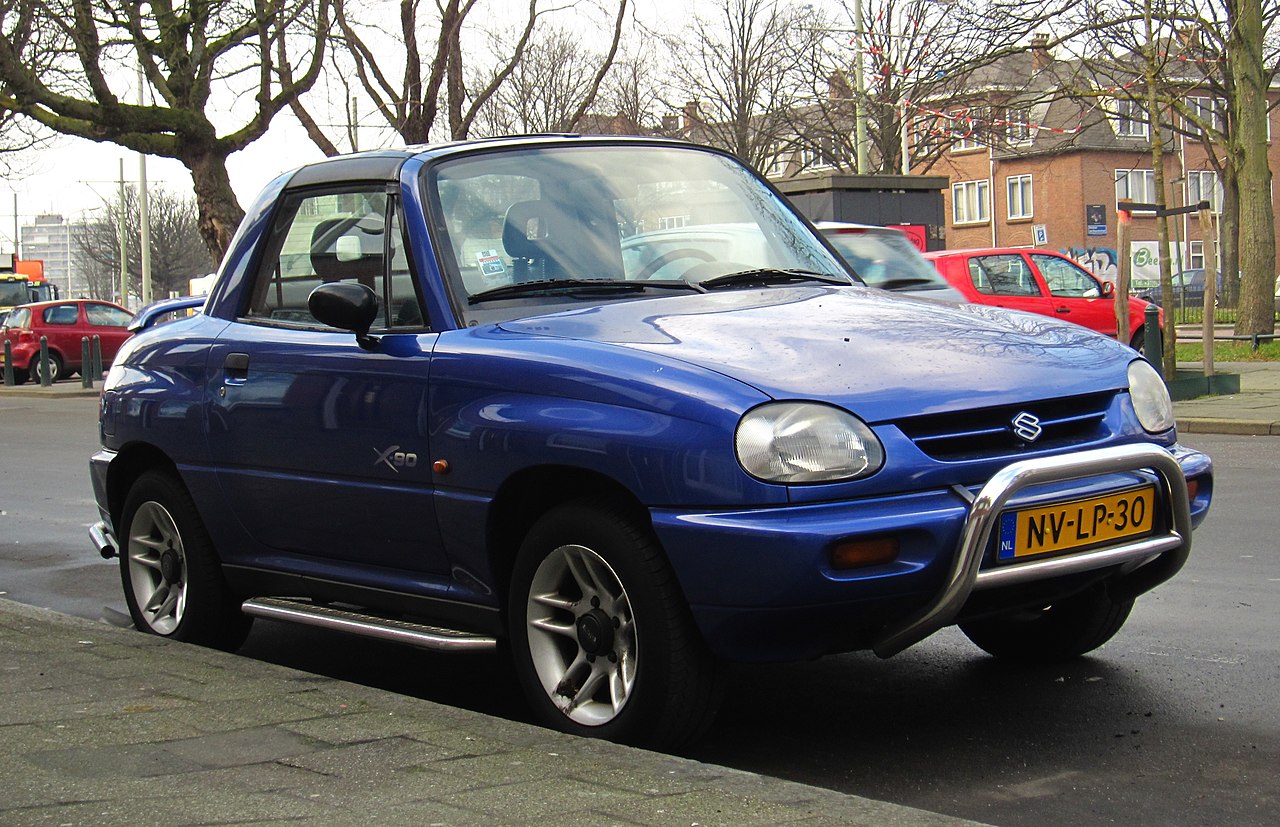Cars The Public Absolutely Hated
Sometimes, cars become universally loved—or at least loved by the bulk of the American public. They even create positive legacies for the manufacturers—like the Chevrolet Corvette Z06, the Mazda Miata, or the 1964 Ford Mustang. But these cars were universally hated—some for good reason, some just didn't sit right with the muscle-hungry American public, and some were simply victims of bad marketing or poor timing when they were released. Does one of your old cars make this list of cars the public absolutely hated?

1949 Triumph Mayflower
First made in 1949 by British manufacturer Triumph, the Mayflower was certainly not forging a new frontier as its namesake did. Originally designed to allow Triumph to break into the American market, the design resembled a Rolls-Royce, but its proportions were all wrong, making it a very ugly-looking car. Its top speed was just 63 mph.
 Phil Parker, CC BY 2.0, Wikimedia Commons
Phil Parker, CC BY 2.0, Wikimedia Commons
1954 Nash/Austin Metropolitan
This collaboration between Nash Motor Company of the US and Austin Motors in the UK was the "worst of both worlds" according to critics. A luxury car with a small frame and huge exterior design meant it was like driving a small boat. It was unreliable, had poor handling and poor performance—and was among the 20 worst cars ever made, according to Money Inc.
 Don O'Brien, CC BY 2.0, Wikimedia Commons
Don O'Brien, CC BY 2.0, Wikimedia Commons
1956 North American Renault Dauphine
Although the Renault Dauphine performed well in Europe, its North American version did not translate well. Its performance was so poor that it took 32 seconds to go from 0-60 mph. At the time, one writer dubbed it "the worst piece of French engineering since the Maginot Line". Ouch.
 Calreyn88, CC BY 4.0, Wikimedia Commons
Calreyn88, CC BY 4.0, Wikimedia Commons
1958 Ford Edsel
The Ford Edsel was named after Henry's Ford's son—no prizes for guessing what his name was. Unfortunately, it did not carry on the legacy in the way Ford would have hoped. It didn't contain enough new features for something marketed as a big upgrade to an entry-level Ford and ended up costing Ford between $250 and $300 million.
 order_242, CC BY-SA 2.0, Wikimedia Commons
order_242, CC BY-SA 2.0, Wikimedia Commons
1960 Chevrolet Corvair
An accident waiting to happen? That was the Chevrolet Corvair. It had a rear-seated engine and a swing-axle rear suspension that made handling difficult. It caused a fair few accidents and was deemed "unsafe at any speed".
1963 Hillman Imp
Developed, planned, and released all within three years, the 1963 Hillman Imp was trying to be a Mini Cooper. Unfortunately, it had poor engine cooling (resulting in motors overheating), gear box and water pump failures, and poor production quality. It was the car that caused Chrysler Europe to buy out the Rootes Group. It was ranked the fifth worst British car ever in 2008, among a survey of 4,000 motorists.
 Jeremy, CC BY 2.0, Wikimedia Commons
Jeremy, CC BY 2.0, Wikimedia Commons
1968 Subaru 360
The novel design of the 1968 Subaru 360 didn't mean it was going to be a commercial success. Imported by Malcolm Bricklin in the late 1960s, because it was cheap to import—and light enough to not need safety standards under US law—it took 37.5 seconds to go from 0-60 mph and was structurally deficient in crash testing at 30 mph. "Virtually useless against anything more formidable than a watermelon", according to testers.
 Mytho88, CC BY-SA 3.0, Wikimedia Commons
Mytho88, CC BY-SA 3.0, Wikimedia Commons
1970 Lada Riva
This thing was like driving a small tank. At least by the way it handled. It also featured a negligible engine performance and boxy design that was out of place within 10 years. It found success in non-European markets, selling 30,000 units in the late 1980s and is one of the longest-running production cars of all time. But was never able to break into the larger European and North American markets, probably because it was made by Russia.
 Forrexp, CC BY-SA 4.0, Wikimedia Commons
Forrexp, CC BY-SA 4.0, Wikimedia Commons
1970 AMC Gremlin
Made by the American Motor Company, the AMC Gremlin was a shortened version of the AMC Hornet, in an attempt to break into the burgeoning subcompact car market in the 1970s. No rear suspension, a very heavy engine, no disc brakes or radial tires meant that the Gremlin "belonged in 1935, not '75", according to critics.
 CZmarlin — Christopher Ziemnowicz, CC BY-SA 4.0, Wikimedia Commons
CZmarlin — Christopher Ziemnowicz, CC BY-SA 4.0, Wikimedia Commons
1970 Chevrolet Vega
The 1970 Chevy Vega came in hot out of the gate, but over time, that enthusiasm dwindled when poor rust-proofing by Chevrolet meant that your Vega didn't last long—extreme corrosion and premature engine failure soon beckoned. In the late 1970s, people were scrapping Vegas at such a high rate that scrapyards refused to purchase them. Wander off into the woods in any direction and you may yet find one.
 wallerdog, CC BY-SA 3.0, Wikimedia Commons
wallerdog, CC BY-SA 3.0, Wikimedia Commons
1971 Ford Pinto
Of course, the Ford Pinto had to make our list. Although people seem to think that the Pinto gets an unfair shake, it did catch on fire simply by being rear-ended, due to a dire fault in the fuel tank—which could explode if hit. At least 27 deaths have been tied to an exploding Pinto.
 Captainpisslord, Wikimedia Commons
Captainpisslord, Wikimedia Commons
1970 Morris Marina
The Morris Marina was released in October, 1970 and designed to be a competitor to the Ford Cortina Mk II. Unfortunately for British company Morris, Ford released the Cortina Mk III that same month and the Marina felt immediately outdated. The car was a $50 million failure, as that was its stunningly-high cost of production.
 kitmasterbloke, CC BY 2.0, Wikimedia Commons
kitmasterbloke, CC BY 2.0, Wikimedia Commons
1973 Reliant Robin
One of the most infamously terrible cars of all time is the three-wheeled Reliant Robin. Owners of the Robin took advantage of tax loopholes that allowed it to be classified as a motorcycle, but were soon regretting their purchases as the fragile fiberglass body and unstable three-wheeled design meant it flipped over (seemingly) with a gentle breeze for encouragement.
 Charles01, CC BY-SA 3.0, Wikimedia Commons
Charles01, CC BY-SA 3.0, Wikimedia Commons
1973 Leyland P76
The 1973 Leyland P76 was as much a victim of poor timing as anything else. The Australian-made cars were badly built with poor-quality materials, largely due to the 1973 oil crisis. They're often seen as the worst Australian car ever made.
 Sicnag, CC BY 2.0, Wikimedia Commons
Sicnag, CC BY 2.0, Wikimedia Commons
1974 Ford Mustang II
The original Ford Mustang was always going to be a hard act to follow. But Ford made it even more difficult by creating the Mustang II with just four—or six—cylinders under the hood. The Mustang II was a far-cry from all that made the OG Mustang great—except for the fuel economy (thanks to the '73 oil crisis), there were no redeeming qualities.
 order_242, CC BY-SA 2.0, Wikimedia Commons
order_242, CC BY-SA 2.0, Wikimedia Commons
1975 AMC Pacer
The successor to the AMC Gremlin did not offer much by way of success at all. It had a new "front forward" design that made you feel like you were driving in a small garlic bulb of sorts, with a long front hood and a very small trunk. It made an appearance in Wayne's World (1992) and was dubbed "an icon of disenfranchised losers" by Edmunds.com.
 Greg Gjerdingen, CC BY 2.0, Wikimedia Commons
Greg Gjerdingen, CC BY 2.0, Wikimedia Commons
1975 Bricklin SV-1
The 1975 Bricklin SV-1 was developed, designed, and paid for by Malcolm Bricklin. Designed with emission-limiting V8 engines (good), but coupled with a dent-resistant plastic body, it "had the look and feel of a hot rod project built in the backyard with a Sawzall and some silicone," according to critics. A poor man's DeLorean.
 Andrew Bone, CC BY 2.0, Wikimedia Commons
Andrew Bone, CC BY 2.0, Wikimedia Commons
1980 Chevrolet Citation X
In 1980, the Chevrolet Citation was a hot commodity—selling nearly 800,000 units. How, then, did it get on our list? Well, not long after the Citation X was released, people began experiencing car parts falling off in their hands. They're part of the reason GM fell, according to many motoring experts.
 CZmarlin — Christopher Ziemnowicz,, CC BY-SA 4.0, Wikimedia Commons
CZmarlin — Christopher Ziemnowicz,, CC BY-SA 4.0, Wikimedia Commons
1981 DMC DeLorean
The 1981 DMC DeLorean was graciously saved by its iconic status from a feature in Back To The Future (1985), but was unfortunately an overall flop. From its Northern Irish factory building (at the height of The Troubles) to being overpriced and underpowered, not even its gull-wing doors nor Marty McFly could save it.
 ilikewaffles11, CC BY 2.0, Wikimedia Commons
ilikewaffles11, CC BY 2.0, Wikimedia Commons
1981 Maserati Biturbo
Before Maserati was making high-performance supercars, they made cars like the 1981 Biturbo. Despite having a swanky new twin-turbocharged engine, the Biturbo was plagued with things breaking. Reportedly, everything that could break, snap, burn, or rupture did so, making the Biturbo a commercial failure. Its design has been compared to a "child's drawing of a car".
 Mr.choppers, CC BY-SA 3.0, Wikimedia Commons
Mr.choppers, CC BY-SA 3.0, Wikimedia Commons
1982 Cadillac Cimarron
The 1982 Cadillac Cimarron became another nail in the General Motors coffin in the early 1980s. Apparently, GM hadn't done anything new or groundbreaking when they released the Cimarron. They'd taken a Chevrolet Cavalier, changed the appearance a bit, and then re-badged it as a Cadillac. Edmunds.com ranked it as the eighth worst car of all time.
 Improbcat, CC BY-SA 3.0, Wikimedia Commons
Improbcat, CC BY-SA 3.0, Wikimedia Commons
1984 Pontiac Fiero
The 1984 Pontiac Fiero was initially a huge hit on the American market. Its exterior design was sleek and the price point was right. But (there's always one), it became a liability Mostly thanks to GM putting an Iron Duke engine in the thing. You see, they caught fire easily—by 1987, engine fires for the 1984 Fiero had reached 20 per month. Needless to say, the Fiero went down in automotive history much like the Pinto.
1985 Yugo
Assembled in Yugoslavia and sold in the United States, the 1985 Yugo was cheap (only $3,990!), but there was a reason for that. It was designed so poorly that things would begin breaking almost immediately. As one critic put it, "felt like it was designed by someone under pain of death".
1986 Buick Riviera
One of a slew of E-type body cars in the late 1980s made by GM that could just about make up this entire list, the Buick Riviera was the first production car to feature a touchscreen computer in the dashboard. But, despite that incredible technological innovation, they were too expensive and looked like a yesteryear design on the outside.
1987 Cadillac Allanté
I promise, we're not bashing GM in every slide on purpose, but the 1987 Cadillac Allanté was yet another failure. It was big, boxy, expensive ($54,000!), and had a troublesome engine and a convertible roof that leaked like a colander. GM lost money on every single Allanté it ever built.
 MercurySable99, CC BY-SA 4.0, Wikimedia Commons
MercurySable99, CC BY-SA 4.0, Wikimedia Commons
1989 Chrysler TC
In 1989, Chevrolet's CEO Lee Iacocca asked his friend, Maserati CEO Alejandro de Tomaso, to build a sports car for Chevrolet, using Chevrolet components. Problem was, that wasn't Maserati's modus operandi, but there are some friends you'll do just about anything for. Unfortunately, it was almost indistinguishable from a Chevrolet LeBaron, and the fact that it was built by Maserati did nothing for anyone.
 Greg Gjerdingen from Willmar, USA, CC BY 2.0, Wikimedia Commons
Greg Gjerdingen from Willmar, USA, CC BY 2.0, Wikimedia Commons
1990 GM U-Platform Minivans
It didn't help that the 1990 U-Platform Minivans (Chev Lumina APV, Pontiac Trans Sport, and Oldsmobile Silhouette) looked like a hand-held vacuum cleaner. Seriously, the things were called "dust busters" because of their resemblance to the thing. Its huge sloping windshield didn't help matters and it performed poorly, too.
1990 Vector W8
Built between 1990 and 1993, the Vector W8 was an American-made supercar, driven by the likes of tennis star Andre Agassi. Unfortunately for Vector, Agassi's car nearly caught fire the very first time he drove it, and he described it to the press as a "death trap". The company only sold 17 units before they folded.
 Ank Kumar, CC BY-SA 4.0, Wikimedia Commons
Ank Kumar, CC BY-SA 4.0, Wikimedia Commons
1995 Suzuki X90
You could be forgiven for thinking that the 1995 Suzuki X90 was a children's toy car, such was its size. This very small SUV was a crossover between an SUV and a buggy that was overpriced, undersized, had terrible handling, and couldn't go off-road to save its life. All in all, an utter failure that nobody wanted after 1997.
 Rutger van der Maar, CC BY 2.0, Wikimedia Commons
Rutger van der Maar, CC BY 2.0, Wikimedia Commons
1996 Vector M12
Another supercar attempt from Vector, six years on from their W8 went just about as well as you might expect. That is, it didn't work very well at all. One of the HVAC units could reportedly be pushed into the dashboard, gasoline could be smelled from inside the car, and it was slower, uglier, and of poorer build-quality than a Lamborghini Diablo.
 Greg Gjerdingen, CC BY 2.0, Wikimedia Commons
Greg Gjerdingen, CC BY 2.0, Wikimedia Commons
1997 Cadillac Catera
Another Caddy that couldn't cut it. The 1997 Catera was Cadillac's attempt in the late-1990s to appeal to German luxury car drivers. Unfortunately, it's poor performance let it down—oh, and the fact that it weighed nearly 4,000 pounds, and couldn't turn easily. Not great on winding German roads. It came with an unimpressive 3.0L V-6 engine that could only putter out 200 horsepower, which was basically useless when paired with the vehicle weight.
 MercurySable99, CC BY-SA 4.0, Wikimedia Commons
MercurySable99, CC BY-SA 4.0, Wikimedia Commons
2002 Hummer H2
The 2002 Hummer H2 was GM's bid to bring the military muscle and might to the general public. While some lapped up the H2 as an excellent choice for the off-road enthusiast, others saw it as an overbearing, overloaded, and unnecessary release from GM in a post-9/11 world.
 Spanish Coches, CC BY 2.0, Wikimedia Commons
Spanish Coches, CC BY 2.0, Wikimedia Commons
2002 Lincoln Blackwood
The 2002 Lincoln Blackwood was an ill-fated attempt to apparently carve out a whole new market: luxury trucks. The rear bed wasn't even a bed—it was a trunk—and the interior was lined with carpet, meaning that anything dirty or with jagged edges couldn't be transported. There wasn't an ounce of utility in the thing.
 Greg Gjerdingen, CC BY 2.0, Wikimedia Commons
Greg Gjerdingen, CC BY 2.0, Wikimedia Commons
2003 Chevrolet SSR
This truck from Chevrolet in 2003 defied description and logic, all at once. It defied description because it took on the shape of a roadster, while also having a long trunk, like a pick up, while also having a retractable hardtop. Make sense? No? Didn't think so.
1971 Vauxhall Viva Firenza
The 1971 Vauxhall Firenza certainly put the "fire" in Firenza. Mostly falling victim to labor shortages in Britain in the early 1970s, the poorly made cars were put together using older spare parts in some cases. This often resulted in brake failures and engine fires. When a 19-year-old Canadian woman died in 1973 because her brakes failed, the Firenza was pulled from the Canadian market and prompted the creation of class-action lawsuits in Canada.
 Charles01, CC BY-SA 4.0, Wikimedia Commons
Charles01, CC BY-SA 4.0, Wikimedia Commons
Tesla Grinds The Public's Gears
Quite apart from the public image of its founder, Tesla vehicles have been under intense scrutiny in the last few years—not just due to the "electric-versus-gasoline" debate that continues to rage, but serious safety concerns have been raised about Tesla's Autopilot system. There have been 27 deaths attributed to the failure of the Tesla Autopilot system and Tesla is facing lawsuits on multiple fronts due to the deaths and injuries that have occurred.
 Natecation, CC BY-SA 4.0, Wikimedia Commons
Natecation, CC BY-SA 4.0, Wikimedia Commons













